
Historic Hiroshima Castle: A Journey Through Time
Discover the Resilient Beauty and Rich History of Hiroshima Castle - A Symbol of Strength and Heritage in the Heart of Hiroshima, Japan.
Hiroshima Castle, also known as Carp Castle, is a magnificent example of Japanese architecture and a poignant symbol of resilience. Originally constructed in the 1590s by powerful feudal lord Mori Terumoto, this iconic fortress has withstood both the ravages of time and the devastating impact of the atomic bombing in 1945. Rebuilt in 1958, Hiroshima Castle now stands as a testament to the enduring spirit of the city and its people. The castle grounds are a picturesque blend of lush greenery, serene moats, and traditional structures that transport visitors back to Japan's feudal era. Within the castle, a well-curated museum offers a fascinating glimpse into the region's rich history, featuring samurai armor, ancient weaponry, and artifacts from the Edo period. Don't miss the panoramic view from the top floor, where you can marvel at the harmonious blend of modern and historical Hiroshima. Surrounding the castle is a charming park that bursts into a sea of cherry blossoms every spring, making it a perfect spot for hanami (flower viewing). The tranquil Shukkeien Garden, located nearby, is an exquisite example of traditional Japanese landscape gardening, offering a peaceful retreat from the bustling city. Whether you're a history buff, a nature lover, or simply seeking a unique cultural experience, Hiroshima Castle and its surroundings promise an unforgettable visit.
Local tips in Hiroshima Castle
- Visit early in the morning to avoid crowds and enjoy a peaceful experience.
- Combine your visit with a trip to Shukkeien Garden for a full day of exploration.
- Springtime, during cherry blossom season, offers the most picturesque views.
- Wear comfortable shoes, as there is a fair amount of walking involved.
- Check the castle's event calendar for special exhibitions and cultural events.
Historic Hiroshima Castle: A Journey Through Time
Hiroshima Castle, also known as Carp Castle, is a magnificent example of Japanese architecture and a poignant symbol of resilience. Originally constructed in the 1590s by powerful feudal lord Mori Terumoto, this iconic fortress has withstood both the ravages of time and the devastating impact of the atomic bombing in 1945. Rebuilt in 1958, Hiroshima Castle now stands as a testament to the enduring spirit of the city and its people. The castle grounds are a picturesque blend of lush greenery, serene moats, and traditional structures that transport visitors back to Japan's feudal era. Within the castle, a well-curated museum offers a fascinating glimpse into the region's rich history, featuring samurai armor, ancient weaponry, and artifacts from the Edo period. Don't miss the panoramic view from the top floor, where you can marvel at the harmonious blend of modern and historical Hiroshima. Surrounding the castle is a charming park that bursts into a sea of cherry blossoms every spring, making it a perfect spot for hanami (flower viewing). The tranquil Shukkeien Garden, located nearby, is an exquisite example of traditional Japanese landscape gardening, offering a peaceful retreat from the bustling city. Whether you're a history buff, a nature lover, or simply seeking a unique cultural experience, Hiroshima Castle and its surroundings promise an unforgettable visit.
Iconic landmarks you can’t miss
Atomic Bomb Dome
Discover the profound history and resilience symbolized by the Atomic Bomb Dome, a UNESCO World Heritage Site in Hiroshima, Japan.
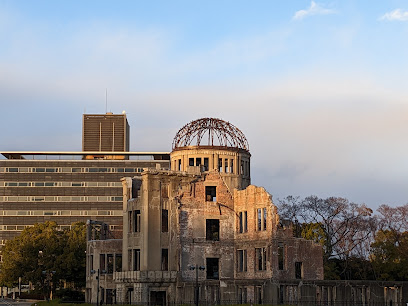
Hiroshima Castle
Discover the enduring spirit of Hiroshima at the iconic Hiroshima Castle, a historical landmark surrounded by serene gardens and rich history.

Ruins of Ninomaru of Hiroshima Castle
Discover the serene beauty and historical significance of the Ruins of Ninomaru at Hiroshima Castle in the heart of Japan.

Gates of Peace
Discover the Gates of Peace in Hiroshima, a poignant symbol of resilience and hope, inviting reflection and unity amid the city's remarkable history.

Ruins of Hiroshima Imperial Army Headquarters
Explore the poignant Ruins of Hiroshima Imperial Army Headquarters, a historical landmark that reflects on Japan's wartime past and resilience.
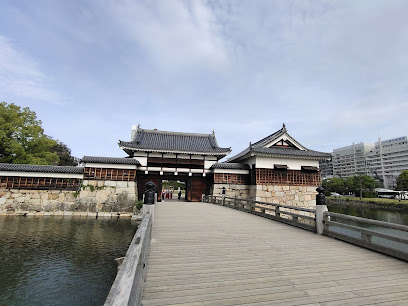
Clock Tower of Peace
Explore the Clock Tower of Peace in Hiroshima, a serene symbol of resilience and hope amidst the city's rich history.

Main Gate
Explore the enchanting Main Gate in Hiroshima, a stunning castle that embodies Japan's rich history and architectural elegance in a serene garden setting.

Hiroshima Castle Eastern Small Tower Ruins
Explore the historic ruins of Hiroshima Castle Eastern Small Tower, a serene testament to Japan's architectural legacy and cultural heritage.

Gate Bridge
Explore the Gate Bridge in Hiroshima, a historic castle blending stunning architecture with rich cultural heritage, perfect for every traveler.

Hiroshima Castle Back Gate Ruins
Explore the Hiroshima Castle Back Gate Ruins, a historical landmark that reflects the resilience and rich heritage of Hiroshima's past.

Unmissable attractions to see
Peace Memorial Park - Hiroshima
Explore Hiroshima's Peace Memorial Park, a deeply moving tribute to resilience, peace, and the enduring spirit of humanity amidst tragedy.

Hiroshima Peace Memorial Museum
Explore the profound history of Hiroshima at the Peace Memorial Museum, a tribute to peace and resilience in the face of adversity.

Hiroshima Castle
Discover the resilience of Hiroshima at Hiroshima Castle, a remarkable historical landmark showcasing Japan's rich heritage and stunning architecture.

Hiroshima Orizuru Tower
Discover the breathtaking views of Hiroshima at Orizuru Tower, a blend of culture, history, and stunning observation from the heart of the city.

Hiroshima Museum of Art
Explore the exquisite collection of the Hiroshima Museum of Art, where Japanese and Western artistry beautifully intertwine, offering a cultural oasis in Hiroshima.

Ruins of Ninomaru of Hiroshima Castle
Discover the enchanting Ruins of Ninomaru at Hiroshima Castle, a historical gem showcasing the city's resilient spirit and rich cultural heritage.

Gates of Peace
Explore the Gates of Peace in Hiroshima, a poignant tourist attraction dedicated to peace, reflection, and the resilience of the human spirit.
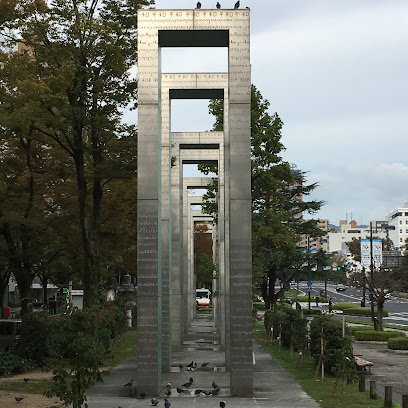
Ruins of Hiroshima Imperial Army Headquarters
Discover the historical significance of the Ruins of Hiroshima Imperial Army Headquarters, a must-visit landmark echoing stories of resilience and courage.

Clock Tower of Peace
Explore Hiroshima's Clock Tower of Peace, a stunning landmark symbolizing resilience, hope, and the city's journey towards renewal.

Hiroshima Castle Keep
Explore Hiroshima Castle Keep, a historical gem showcasing Japan's rich architecture and heritage, surrounded by serene gardens and captivating views.

Hiroshima Castle Back Gate Ruins
Discover the serene Hiroshima Castle Back Gate Ruins, a historical landmark that showcases the resilience and rich cultural heritage of Japan.

Essential places to dine
Okonomi mura Suigun
Discover Hiroshima's culinary gem at Okonomi Mura Suigun – where delicious okonomiyaki meets vibrant cultural experiences.

Nagataya
Discover Hiroshima's culinary gem at Nagataya – home of authentic okonomiyaki served fresh on teppanyaki grills.

Mitchan Sohonten Hatchobori
Discover authentic Hiroshima okonomiyaki at Mitchan Sohonten Hatchobori – where culinary artistry meets tradition in every delicious bite.

Masui
Experience authentic tonkatsu at Masui, Hiroshima's favorite meat haven known for its deliciously crispy pork cutlets.

Caffè Ponte
Discover authentic Italian flavors at Caffè Ponte in Hiroshima - where every dish tells a story of culinary passion.

KeMBY's Brew Pub
Discover KeMBY's Brew Pub: A Fusion of Flavorful Hamburgers, Craft Beers, and Vibrant Atmosphere in Hiroshima.

Tsuki Akari
Experience authentic Japanese cuisine at Tsuki Akari in Hiroshima – where tradition meets taste in every delightful bite.
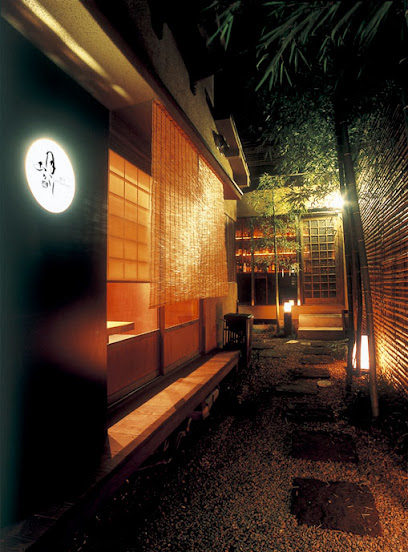
Kome Kome Shokudo
Experience authentic teishoku at Kome Kome Shokudo in Hiroshima - where local flavors meet warm hospitality.

Hiroshima Shutendoji
Experience authentic Japanese cuisine at Hiroshima Shutendoji, where flavorful hot pots and regional delicacies await every food lover.

Japanese Restaurant Naniwa
Experience authentic teppanyaki at Japanese Restaurant Naniwa in Hiroshima—where culinary artistry meets tradition for an unforgettable dining adventure.
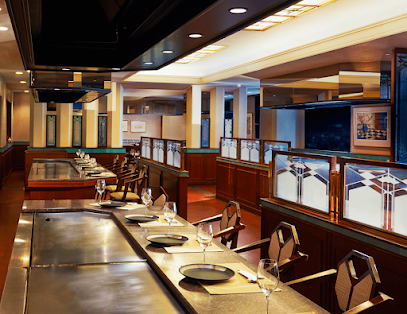
Markets, malls and hidden boutiques
Hiroshima Castle
Explore Hiroshima Castle, a historical landmark showcasing Japan's rich heritage with stunning views and serene gardens.
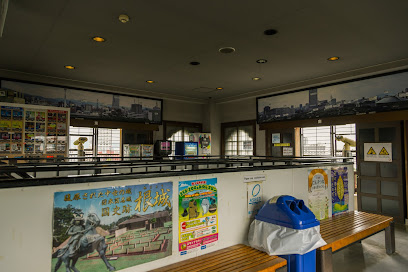
SOGO Hiroshima Store
Discover the heart of Hiroshima's shopping scene at SOGO Hiroshima Store, where local culture meets modern retail in a vibrant setting.

Hiroshima PARCO
Discover Hiroshima PARCO: A vibrant shopping mall where modern retail meets local culture, offering an array of shopping, dining, and entertainment experiences in Hiroshima.

Fukuya Hatchobori Store
Explore Fukuya Hatchobori Store in Hiroshima for an exquisite shopping experience blending luxury and local charm.

Hands Hiroshima
Explore the vibrant variety store, Hands Hiroshima, for unique gifts, home goods, and local treasures in the heart of Hiroshima.

Sunmall
Discover the vibrant shopping scene at Sunmall, Hiroshima's premier shopping destination with diverse stores, dining, and entertainment.

Animate Hiroshima
Explore Animate Hiroshima, a vibrant comic book store offering a treasure trove of anime, manga, CDs, and collectibles in the heart of Hiroshima.
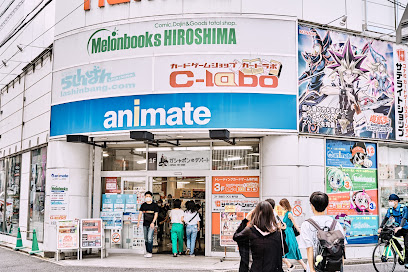
Yume Plaza
Discover Yume Plaza in Hiroshima, a treasure trove of authentic souvenirs showcasing Japan's rich culture and artistry, perfect for every traveler.

Nagasakiya
Discover unique souvenirs and local treasures at Nagasakiya, Hiroshima's must-visit shop for travelers seeking memorable keepsakes.

Hondori Shopping Street
Discover the vibrant Hondori Shopping Street in Hiroshima, a perfect blend of shopping, dining, and cultural experiences for every traveler.

Essential bars & hidden hideouts
Molly Malone’s
Discover the spirit of Ireland in Hiroshima at Molly Malone’s, a lively Irish pub serving delicious food and drinks in a cozy atmosphere.
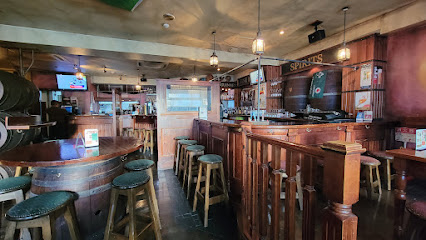
Hiroshima 1923 High Ball Bar
Discover Hiroshima 1923 High Ball Bar, a trendy spot offering innovative cocktails and a cozy atmosphere perfect for a night out in Hiroshima.

SHACK
Experience the vibrant taste of Hiroshima at SHACK, a grill restaurant known for its delightful grilled dishes and lively atmosphere.

Bar Alegre
Experience Hiroshima's vibrant nightlife at Bar Alegre, where skilled bartenders serve up exquisite cocktails in a cozy setting.
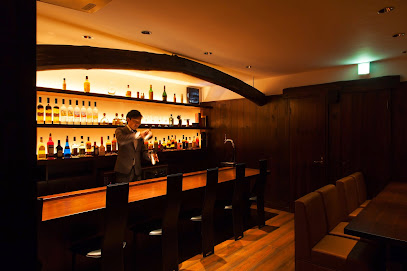
Mac Bar
Discover Mac Bar in Hiroshima: A vibrant spot for drinks, local culture, and unforgettable nights in the heart of the city.

段原Little Standard 靴を脱いで寛ぐStyle
Discover段原Little Standard, a cozy bar and grill in Hiroshima, where you can unwind, indulge in cocktails, and savor delicious grilled dishes in a relaxed atmosphere.

Tropical Bar Revolución
Experience the vibrant nightlife of Hiroshima at Tropical Bar Revolución, where delicious cocktails and a lively atmosphere await every visitor.

Bar the Lounge Top Note (ザ ラウンジ トップノート 別館)
Discover the elegance of Hiroshima at Bar the Lounge Top Note, where expert mixology meets a sophisticated atmosphere for cocktail enthusiasts.

Bar the Lounge Top Note
Discover the elegance of Bar the Lounge Top Note in Hiroshima, offering a sophisticated ambiance and exquisite cocktails for an unforgettable night.

Bar Yoh
Discover Bar Yoh, Hiroshima's vibrant bar offering unique cocktails and a cozy atmosphere, perfect for unwinding after a day of exploration.

BARCOS International Club
Discover the pulsating nightlife of Hiroshima at BARCOS International Club, where great drinks and music create unforgettable evenings.

Local Phrases
-
- Helloこんにちは
[Kon'nichiwa] - Goodbyeさようなら
[Sayōnara] - Yesはい
[Hai] - Noいいえ
[Iie] - Please/You're welcomeどうぞ
[Dōzo] - Thank youありがとうございます
[Arigatō gozaimasu] - Excuse me/Sorryすみません
[Sumimasen] - How are you?お元気ですか?
[O-genki desu ka?] - Fine. And you?元気です。あなたは?
[Genki desu. Anata wa?] - Do you speak English?英語を話しますか?
[Eigo o hanashimasu ka?] - I don't understandわかりません
[Wakarimasen]
- Helloこんにちは
-
- I'd like to see the menu, pleaseメニューを見せてください
[Menyū o misete kudasai] - I don't eat meat私は肉を食べません
[Watashi wa niku o tabemasen] - Cheers!乾杯!
[Kanpai!] - I would like to pay, pleaseお会計をお願いします
[Okaikei o onegaishimasu]
- I'd like to see the menu, pleaseメニューを見せてください
-
- Help!助けて!
[Tasukete!] - Go away!行ってください!
[Itte kudasai!] - Call the Police!警察を呼んでください!
[Keisatsu o yonde kudasai!] - Call a doctor!医者を呼んでください!
[Isha o yonde kudasai!] - I'm lost道に迷っています
[Michi ni mayotte imasu] - I'm ill具合が悪いです
[Guai ga warui desu]
- Help!助けて!
-
- I'd like to buy......を買いたいです
[... o kaitai desu] - I'm just lookingただ見ています
[Tada mite imasu] - How much is it?いくらですか?
[Ikura desu ka?] - That's too expensiveそれは高すぎます
[Sore wa takasugimasu] - Can you lower the price?値段を下げてもらえますか?
[Nedan o sagete moraemasu ka?]
- I'd like to buy......を買いたいです
-
- What time is it?今何時ですか?
[Ima nanji desu ka?] - It's one o'clock一時です
[Ichiji desu] - Half past (10)10時半
[Jūji han] - Morning朝
[Asa] - Afternoon午後
[Gogo] - Evening夕方
[Yūgata] - Yesterday昨日
[Kinō] - Today今日
[Kyō] - Tomorrow明日
[Ashita] - 1一
[Ichi] - 2二
[Ni] - 3三
[San] - 4四
[Yon] - 5五
[Go] - 6六
[Roku] - 7七
[Nana] - 8八
[Hachi] - 9九
[Kyū] - 10十
[Jū]
- What time is it?今何時ですか?
-
- Where's a/the...?...はどこですか?
[... wa doko desu ka?] - What's the address?住所は何ですか?
[Jūsho wa nan desu ka?] - Can you show me (on the map)?(地図で)見せていただけますか?
[(Chizu de) misete itadakemasu ka?] - When's the next (bus)?次の(バス)はいつですか?
[Tsugi no (basu) wa itsu desu ka?] - A ticket (to ....)(...)へのチケット
[(...) e no chiketto]
- Where's a/the...?...はどこですか?
History of Hiroshima Castle
-
Hiroshima Castle, known as 'Rijo,' was originally constructed in 1589 by the feudal lord Mōri Terumoto as a strategic military stronghold and a symbol of power. The castle's design reflects the traditional Japanese castle architecture of the Edo period, featuring a distinctive wooden structure and multi-tiered roofs. Its location along the rivers and hills provided both defensive advantages and a picturesque backdrop.
-
With the Meiji Restoration in the late 19th century, Hiroshima Castle underwent significant changes. The castle's military importance waned as Japan shifted towards modernization and Western-style governance. In 1871, much of the castle was dismantled, and the remaining structures were repurposed for civilian use. This period marked a transition in Hiroshima's identity from a military stronghold to a burgeoning modern city.
-
On August 6, 1945, Hiroshima was devastated by an atomic bomb, leading to the near-total destruction of the original castle. The bomb's epicenter was only about 1.6 kilometers away, resulting in the loss of countless lives and historic buildings. The castle's ruins became a powerful symbol of the city's suffering and resilience in the aftermath of the war.
-
In 1958, Hiroshima Castle was reconstructed, using traditional methods and materials to restore its original appearance. The rebuilt castle serves not only as a historical monument but also as a museum, showcasing the city's rich history, culture, and the legacy of peace. The castle grounds have become a popular destination for both locals and tourists, featuring beautiful gardens and cherry blossoms in spring.
-
Today, Hiroshima Castle stands as a testament to the city's enduring spirit and commitment to peace. It is surrounded by a tranquil park that invites reflection and remembrance. The castle and its surrounding area are integral to understanding Hiroshima's history, offering insight into the city's feudal past, its wartime experiences, and its journey towards recovery and reconciliation.
Hiroshima Castle Essentials
-
Hiroshima Castle is located in the center of Hiroshima City. From Hiroshima Station, take the Astram Line to the Kencho-mae Station, which is a short walk from the castle. Alternatively, local buses run frequently from the station to the castle area. For visitors coming from the Peace Memorial Park, it's about a 20-minute walk or a 10-minute tram ride on the Hiroshima Electric Railway to the closest tram stop.
-
Once at Hiroshima Castle, the area is best explored on foot, as it's surrounded by beautiful gardens and historical sites. Bicycles can be rented from various locations around the city, and there are dedicated bike lanes. Public transport options include trams and buses, which are efficient for reaching other parts of the city.
-
Hiroshima is generally safe for tourists, with low crime rates. However, like in any city, it's wise to stay alert, especially in crowded areas. Avoid walking alone late at night in isolated spots. While there are no specific high-crime areas, tourists are advised to keep their belongings secure and be cautious of pickpockets in busy areas.
-
In case of emergency, dial 110 for police assistance or 119 for fire and medical emergencies. The Hiroshima City Hospital is nearby, and several clinics are available throughout the city. It's advisable to have travel insurance that includes health coverage. Familiarize yourself with the nearest hospital location during your visit.
-
Fashion: Do wear comfortable shoes for walking, and respect local customs by dressing modestly. Religion: Do observe silence in sacred areas, particularly in shrines and temples. Public Transport: Do be mindful of others; avoid loud conversations. Don't eat or drink on public transport. Greetings: Do bow slightly when greeting; a handshake is also acceptable. Eating & Drinking: Do try local dishes and express gratitude for meals; don't waste food, as it's considered disrespectful.
-
To experience Hiroshima Castle like a local, consider visiting during the cherry blossom season in spring for breathtaking views. Engage with local vendors at food stalls around the castle for authentic Hiroshima-style okonomiyaki. Try to attend local festivals held in the castle grounds, where you can experience traditional performances. Additionally, take the time to explore the surrounding Shukkeien Garden for a peaceful retreat.
Nearby Cities to Hiroshima Castle
-
Things To Do in Fukuoka
-
Things To Do in Osaka
-
Things To Do in Nara
-
Things To Do in Kyoto
-
Things To Do in Ulsan
-
Things To Do in Busan
-
Things To Do in Gyeongju
-
Things To Do in Pohang
-
Things To Do in Daegu
-
Things To Do in Andong
-
Things To Do in Nagoya
-
Things To Do in Kanazawa
-
Things To Do in Suncheon
-
Things To Do in Daejeon
-
Things To Do in Jeonju










